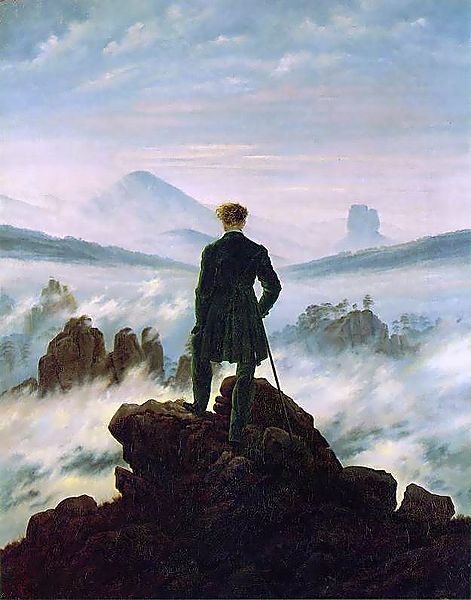Steven is a bit harsh on Brickmuppet, who was complaining that we haven’t escaped low-earth orbit in four decades, and how that represented a betrayal of our generation’s birthright. Steven argues that the past 40 years, dominated by unequivocally successful space probes throughout the solar system and (in the case of Voyager) beyond, have been anything but a betrayal, but I think Steven misses the point.
Steven is right, that the best way to do science is via unmanned probes. You can pack more sensors and bring back more data without the need to keep a human being alive – this is just the simple reality of biology, information theory, and physics. But the space program was only partly about science, it was also about something more primal, about something that is unique to the human animal, the need to explore and understand. That indefinable wanderlust has been the subject of artistic exploration as well as physical – I think it’s best captured by Romanticist art, in particular the famous painting The Wanderer (1818) by German artist Caspar David Friedrich:

I’ll leave the meta-analysis to Wikipedia but I think anyone will recognize a familiar emotion in this work – the same emotion that makes us receptive to 2001: a Space Odyssey, or Star Trek, or even Lord of the Rings. The space program was the ultimate expression of this wanderlust because it was real – the possibility existed that we might actually follow where our imaginations have lead. All of us wanted to be an astronaut, and most of us still do. Maybe our children will yet be, one day.
